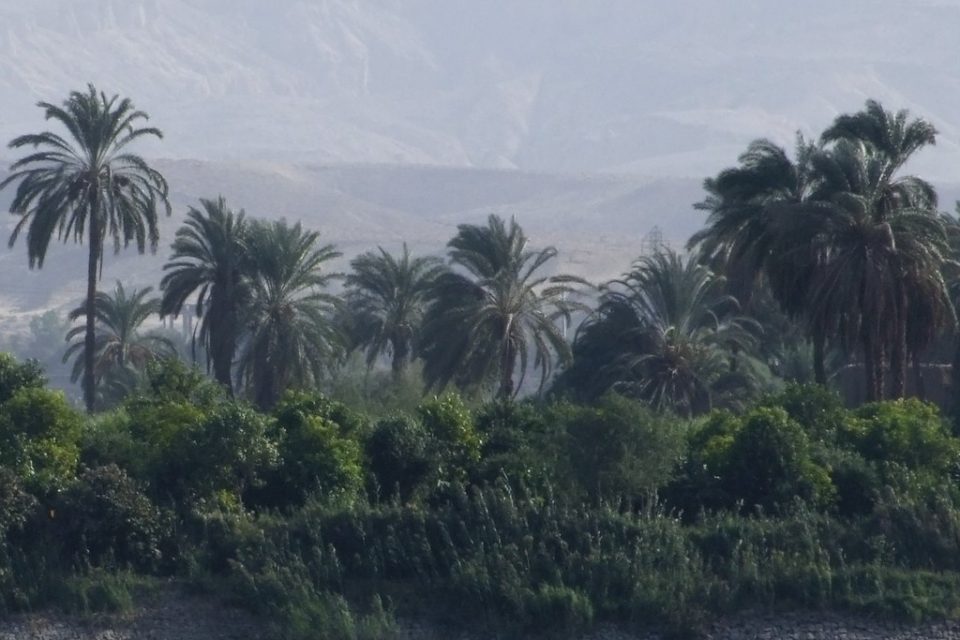Water security is the focus topic of the Nile State of the Basin Report 2021, which will be published shortly by the Nile Basin Initiative. I contributed to this report and wrote—among other text—the draft of the Synthesis Chapter. This post highlights some observations and conclusions.
The Nile is a small river
Maybe surprising to many, but the Nile is a small river in terms of volume of discharge relative to the size of the catchment area (some 10% of the African continent), the length of the river, and the number of people living in the basin. In terms of annual renewable runoff, the Nile is fifteen times smaller than the Congo, which only has a slightly larger catchment.
Grand Ethiopian Renaissance Dam
Contrary to what dominates the news, the Grand Ethiopian Renaissance Dam (GERD) does not necessarily have an adverse impact on long-term water security in the Nile basin. After the reservoir has filled—which may take a few years—GERD has many beneficial functions. These include flood control, producing cheap and clean electricity, and facilitating agricultural intensification in the extensive downstream irrigation areas. In addition, the extra water storage in the Nile system created by GERD strengthens resilience to an increasingly variable climate. If jointly managed with the co-basin states—or through an effective consultative process—GERD could contribute to water security in the downstream countries.
Increasing pressure on water resources
The renewable surface water resources in the Nile basin are now fully used, predominantly for irrigated agriculture in Egypt and Sudan. Consumptive water use for domestic and industrial purposes is small in comparison, while water used for hydropower production is modest because the primary purpose of the main man-made reservoirs—except for Merowe, Tekezze, and GERD—is to provide irrigation water. It is probable that water availability is already insufficient for ecosystem protection in the Nile delta.
Since demand for water continues to rise because of population growth and socio-economic development, water resources in the Nile basin are under rapidly growing pressure. Additionally, there is considerable risk that freshwater downstream of major urban areas will become heavily polluted—and thus become de facto unusable—because of exponentially increasing volumes of wastewater due to urbanization and industrialization.
The Nile countries still have many options to achieve water security
Despite the unprecedented pressure on the Nile waters, the Nile countries are in possession of a considerable set of options to achieve water security. These include, but are not limited to, extending the productive use of the large rainwater resources, improve irrigation efficiencies, import virtual water through food imports, reduction of large food losses, use of non-conventional water sources for municipal and industrial purposes, reduction of reservoir evaporation losses through coordinated reservoir operation, use of fossil groundwater, etc.
Thus, while relative water scarcity is real in the Nile basin, it does not inevitably translate into negative consequences for the diverse ecological, economic, and social systems in the Nile countries.
Low productivity of rainwater
Rainwater represents a very substantial water resource that is currently underused. Specifically, the productivity of rainwater is low in rainfed farming across the Nile basin—which covers 87% of arable land. It suggests large untapped water resources and agricultural potential. Most of these areas receive substantial but highly variable rainfall, as illustrated by average transpiration values—representing rainwater used for biomass production—of 750 mm/year or above. This constitutes a huge volume of water.
Low rainwater productivity is primarily caused by low crop yields. Fortunately, water deficits during plant growth that cause periodic crop failure & low yields are typically small. It implies that water security in rainfed agriculture can be achieved through a combination of local and small-scale measures concerned with supplementary irrigation, land and water conservation, and water harvesting. The water resources implications of these measures at Nile basin scale are small because of the low runoff coefficient experienced in large parts of the upstream Nile region, which means that most rainfall never reaches the Nile river system.
Thus, water resources for agricultural purposes are available in principle in the upstream Nile region but should be better managed. The huge practical difficulties in increasing yields and extending the productivity of these water resources—mostly rainwater—are acknowledged.
The large rainfed agricultural sector is vulnerable to climate change
Climate change poses a serious risk to the people living in the Nile basin. Specifically, the large rainfed agricultural sector is very vulnerable to climate impacts. Farmers are almost totally unprepared to cope with more unpredictable weather and more frequent dry spells. Higher risks of crop failure will impede agricultural modernization and hamper the crucial objective to improve yields in rainfed farming. It has adverse consequences for rural development, poverty alleviation, land degradation and environmental sustainability, and rural-urban migration. Additionally, it is unlikely that food security in the Nile basin—specifically for the large and growing rural population—can be achieved without improving crop yields, which is becoming more difficult because of climate impacts.
Implementation is slow
While many options exist to achieve water security in the Nile basin, to date there is limited progress in implementing the measures that are available. Specifically, there is insufficient progress in improving water productivity in the critical agricultural sector. Ongoing investments in wastewater treatment are equally inadequate.
